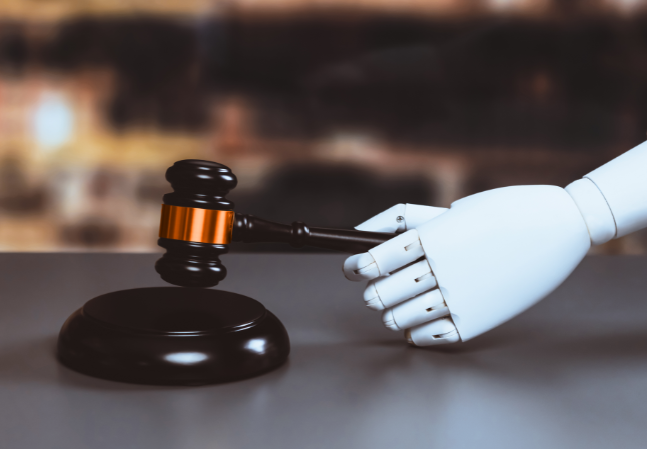Welcome! Save 30% on all CLE, CPE, and Professional Skills webinars, plus 15% off any annual pass with code HOLIDAY25
About the Course
Introduction
This CLE webinar will discuss how plaintiffs’ counsel can turn the tables on predictable defense strategies related to contributory negligence and leverage a pre-existing condition to make the jury understand the severity of a specific plaintiff’s injuries. The panel will explain how to meet these defenses head on and reverse the typical narratives.
Description
With a thorough understanding of how the applicable jurisdiction apportions fault, plaintiff’s counsel can nimbly thwart attempts to inappropriately shift blame and focus from the defendant to plaintiff.
It is black letter law that defendants must take their plaintiffs as they find them, but too often the defense tries to suggest that preexisting conditions should preclude pain and suffering compensation for the "eggshell" plaintiff. Nothing could be further from the truth.
Preexisting injury cases require thoughtful planning and often the use of experts, but preexisting conditions can justify higher damages by explaining that the extent and severity of the plaintiff's pain and suffering under circumstances in which others might not have been hurt.
Listen as this experienced panel guides counsel through the advantages and disadvantages of taking cases involving preexisting injuries as well as how to navigate allegations of comparative and contributory fault.
Presented By

Ms. Ptacek is a lawyer in the firm’s Personal Injury Section, where she represents individuals who have been injured and family members of deceased victims. Before joining the firm, she worked for a different plaintiff’s firm in Georgia, handling cases involving catastrophic injury, premises liability, trucking accidents, amputation, medical malpractice, wrongful death, whistleblower / qui tam, government monitorship and federal criminal defense. Prior to law school, Ms. Ptacek worked as a paralegal in a solo practice firm handling car accidents, trucking accidents, and premises liability cases.

Mr. Seiferheld has been a trial lawyer for nearly 25 years. He specializes in litigation involving large commercial vehicles and semi-trucks, No-Fault matters, insurance coverage disputes, municipal vehicles and construction accidents. Mr. Seiferheld has argued complex legal issues before the Michigan Court of Appeals on several occasions and achieved victories for his clients every time. He has obtained millions of dollars for his injured clients and is a tenacious fighter both inside and out of the courtroom.
-
This 90-minute webinar is eligible in most states for 1.5 CLE credits.
-
Live Online
On Demand
Date + Time
- event
Thursday, July 13, 2023
- schedule
1:00 p.m. ET./10:00 a.m. PT
- Comparative and contributory fault schemes
- Factors that impact juries' apportionment of fault
- Best practices for personal injury attorneys to overcome plaintiff's level of fault
- Types of preexisting condition
- Asymptomatic
- Symptomatic preexisting condition that is worsened
- Overall physicality is diminished
- Physical and mental preexisting conditions
- Causation
- Different injury
- Aggravated injury
- Factors supporting general damages related to preexisting conditions
- Personality and demeanor of plaintiff
- Location, timing, nature of post-accident pain and suffering
- Role of experts
- Before and after activities
- Transparency
- Jury instructions
The panel will review these and other key issues:
- What is the effect of a plaintiff's partial responsibility for an accident?
- What arguments work best for reducing the plaintiff's fault?
- How might preexisting conditions increase recovery for pain and suffering compared to cases with none?
- What factors affect recovery in preexisting condition cases?
- Does it matter if the preexisting condition is emotional, mental, or physical?
Unlimited access to premium CLE courses:
- Annual access
- Available live and on-demand
- Best for attorneys and legal professionals
Unlimited access to premium CPE courses.:
- Annual access
- Available live and on-demand
- Best for CPAs and tax professionals
Unlimited access to premium CLE, CPE, Professional Skills and Practice-Ready courses.:
- Annual access
- Available live and on-demand
- Best for legal, accounting, and tax professionals
Unlimited access to Professional Skills and Practice-Ready courses:
- Annual access
- Available on-demand
- Best for new attorneys
Related Courses

Medicare and Medicaid 2026 Reimbursement Requirements: Key Changes Affecting Personal Injury Lawyers
Thursday, January 29, 2026
1:00 p.m. ET/10:00 a.m. PT

Nursing Home Injury Litigation: Common Claims, Medical Records, and Damages Assessment
Tuesday, January 27, 2026
1:00 p.m. ET./10:00 a.m. PT
Recommended Resources

Making Continuing Education Work for You, Anytime, Anywhere
- Learning & Development
- Career Advancement

Getting the Most Out of BARBRI Resources
- Learning & Development
- Business & Professional Skills
- Talent Development

